With a little bit of time to spare the Nieuw Amsterdam arrived at the convoy assembly area, to line up for the Transit. The canal still runs in convoys as the area at the Culebra Cut is still not wide enough for ships to pass each other. That might happen in the future but it will take a lot of dynamite before that day arrives.
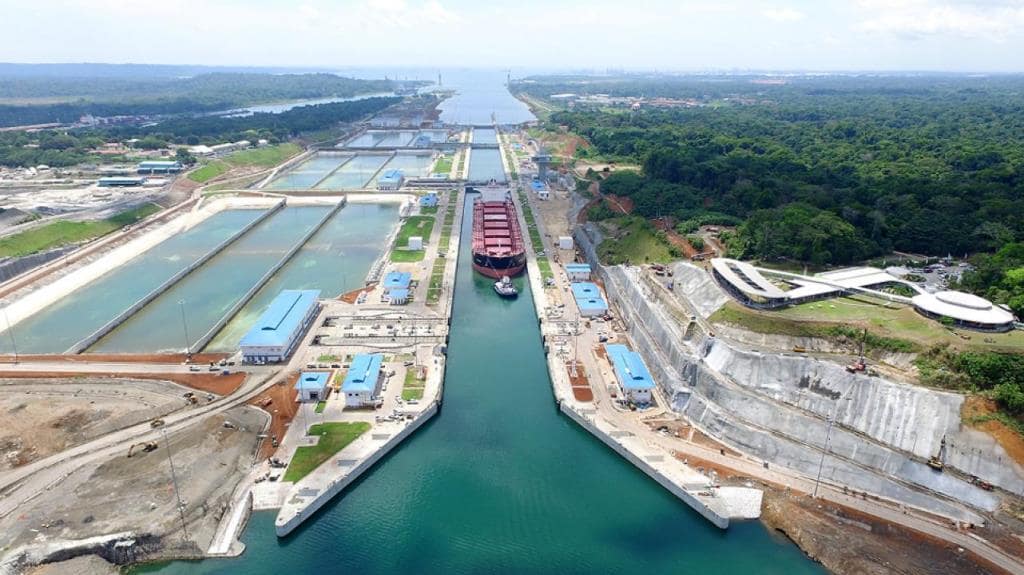
The new locks are now also in operation. This is the Atlantic side, but still used sparingly. There has been some good rain fall lately but conserving water is still very important.
Once the ship is drifting off the sea buoy, there is a whole flotilla of boats that attend to the ship. The agent arrives to deal with anything needed and to bring the Panama Canal narrator. The Boarding Officer arrives to clear the ship. The Canal Technician arrives to see if all the required equipment is working, such as the steering light, the window wipers, the whistle etc. etc. Then the first pilot arrives who will take the ship towards the first locks. They all come with their own boat, although the Canal Technician often comes together with the Boarding Officer. Once everybody is happy the pilot gets the green light from the Boarding officer and then slots the ship in, in between the rest depending on the number assigned. Today we had a whole cruise fleet going through. Ahead of us was the Norwegian Sun and behind us we had the Norwegian Pearl. White hull, blue hull, white hull.
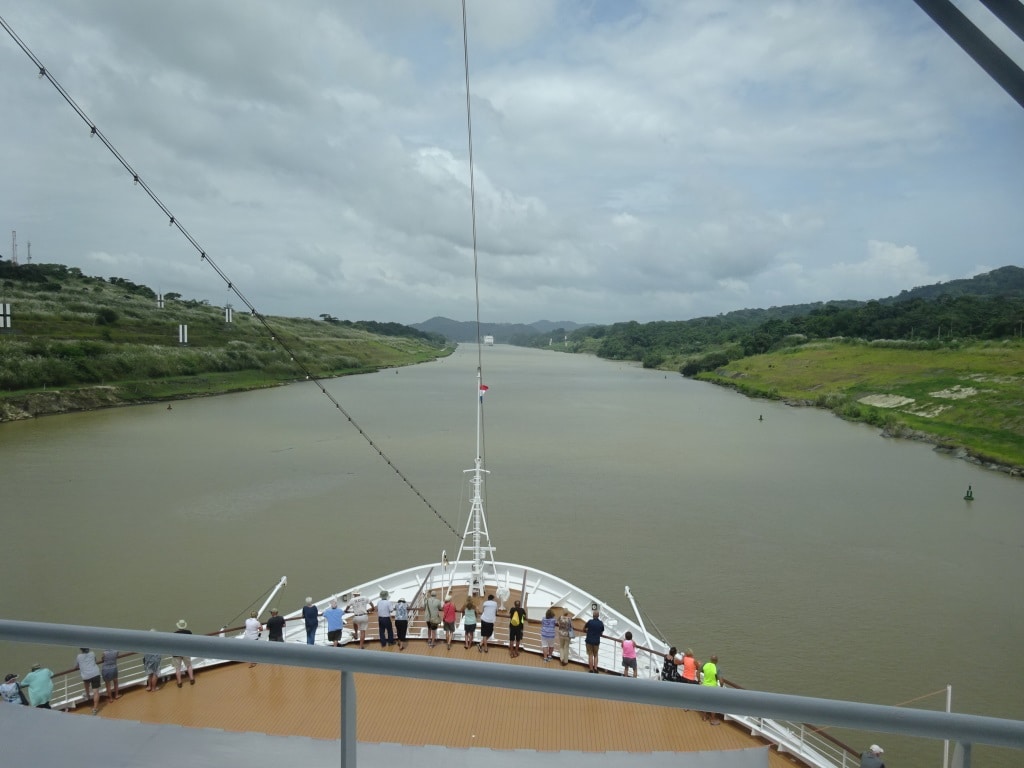
View from the Bridge of the Nieuw Amsterdam while in the Culebra Cut. It is much wider than in the old days, but not wide enough yet for opposing traffic. The white square in the distance is the Norwegian Sun.
Once the ship comes closer to the locks, the 2nd and 3rd pilot comes on board, followed by the Panama Canal crew which will handle the wires of the locomotives when they make fast to the ship. All ships have a 2nd pilot and two pilots work as a team on the bridge each on a bridge wing when going through the locks. One pilot takes the lead, the other assists with distances at the opposite side of the bridge. Once the ship is sailing through the Canal they take shifts in conning the vessel. Ships which have overhanging lifeboats, making it impossible for the pilot on the bridge wing to what the aft locomotives are doing, have a 3rd pilot who will stand at the stern when going through the locks. A transit for a cruise ship normally takes between 8 to 10 hours from sea buoy to sea buoy although it can be shorter or longer. I have done it once in 6 hours but I also had a colleague who was stuck behind a tanker (which was really stuck in a lock) and it took 16 hours to get back to open sea.
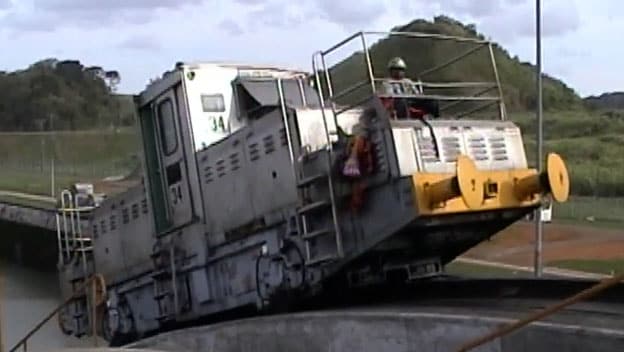
The all important locomotives or mules which keep the ship in the center while going through the locks.
In my 37 years of going through the Canal on a regular basis, I have never found it dull. There is always something new to see, as the Canal is continuously expanding or evolving and there is always something to think about; why are they doing it that way. Also today, there was something of special interest going on. While going into the first locks (Miraflores) they were a locomotive short and somebody had to run to the waiting area to wake up the driver. No big deal but with an operation that works on the minute to get as many ships through as possible, any delay becomes at once a significant delay. Then in the next locks a locomotive got stuck, we think the engine seized up, so the ship had to put the brakes on otherwise the locomotive would have been pulled off the tracks. This happened sometime in the past with a bulk carrier whose bow swung the wrong way and the locomotive nicely plunged into the Canal. Getting a 40 ton locomotive out of the water is not that easy, although the canal has procedures in place for all these sort of happenings.
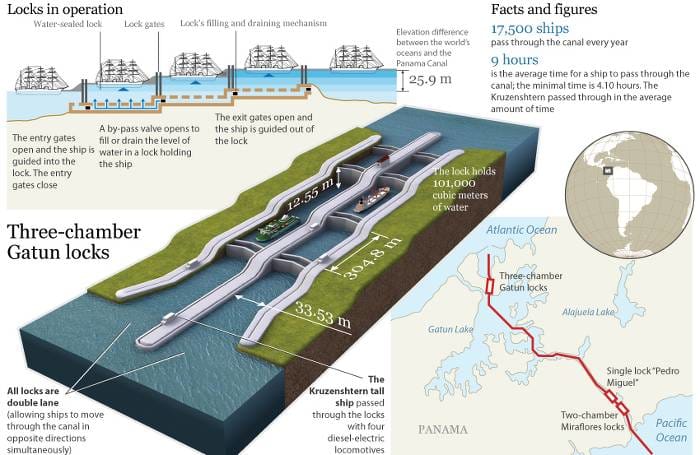
Overview of the largest lock system on the Atlantic side. At the Pacific side it is split in a one chamber and a two chamber set up.
The weather remained quite good for the day and although it was tropically warm, it was mostly overcast which make it quite enjoyable to stay out for longer periods. We were at the sea buoy on the Pacific Side at 05.00 hrs. and we were at the sea buoy on the Atlantic Side at 17.00 hrs. so this was a transit of about 12 hrs. from the very beginning to the very end and that is about average. Start of first lock to end of last lock was from 07.30 hrs. to 16.00 hrs. and that is a regular day for guest sightseeing.
Tomorrow we are at sea, heading North West towards Aruba and I am expecting a bit of a bumpy ride as the ship has to go against strong N.E winds and waves.
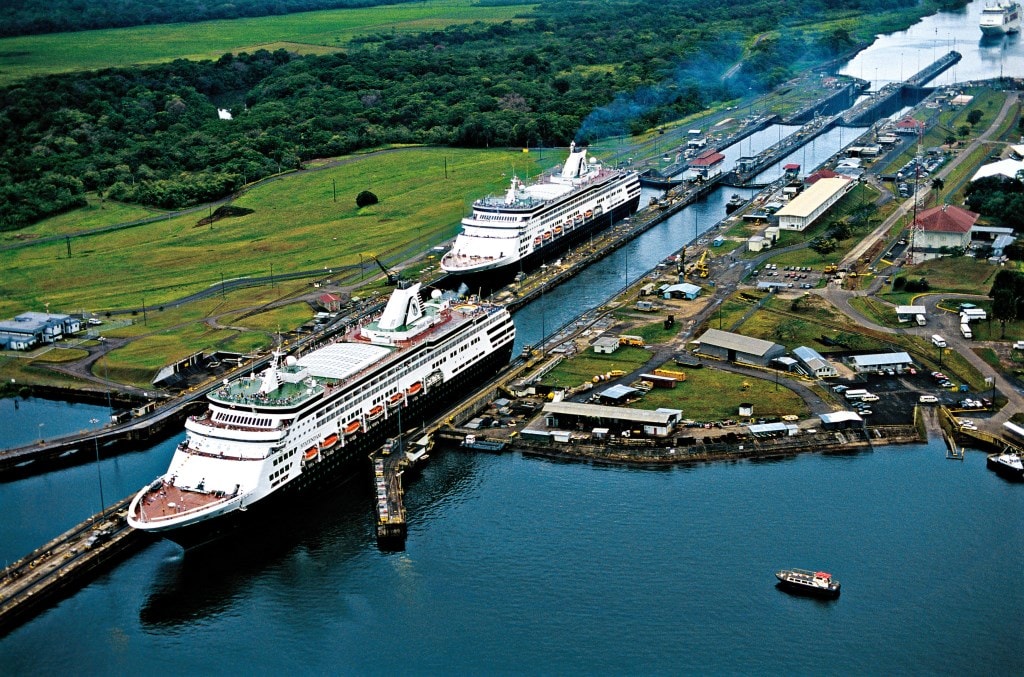

October 18, 2017 at 11:46 am
Nice photos! Can’t wait to see the canal in November on Zuiderdam….